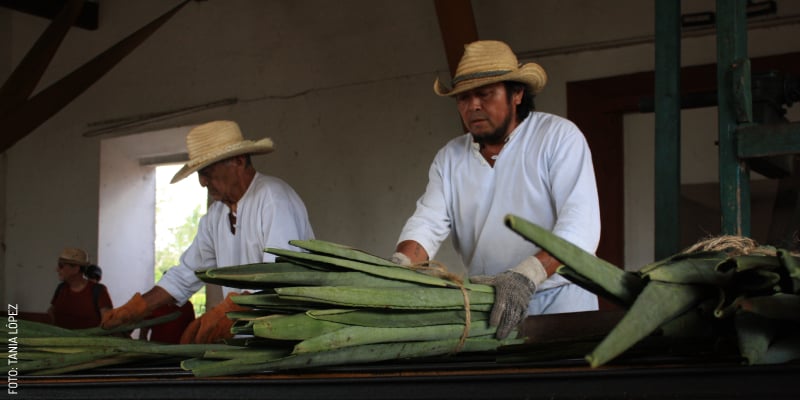
The History of Henequén, Yucatán’s Green Gold
Legend has it that Zamná, the Maya god of wisdom, was the one who discovered the virtues of Henequén, which is what the sisal plant is called in Spanish. While walking through a field one day, a plant's thorns cut his skin, revealing its resilient nature. Right then, Zamná decided to give Henequén to the Maya people. Even if you are skeptical and don't believe in legends, you can be sure that Henequén has accompanied the Maya since long before the arrival of the Spanish in America.
Called "Ki" in the Maya language, the Henequén plant ( Agave fourcroydes ) is part of the agave genus, but unlike the rest of its family, it’s only native to the state of Yucatán. The fiber obtained from this plant became known worldwide as "sisal" due to the shipping marks bearing the name of the port from where it was exported globally. Henequén played a vital role in the international textile industry during the 19th and 20th centuries, so you can imagine its significance in the region's economy during that time.
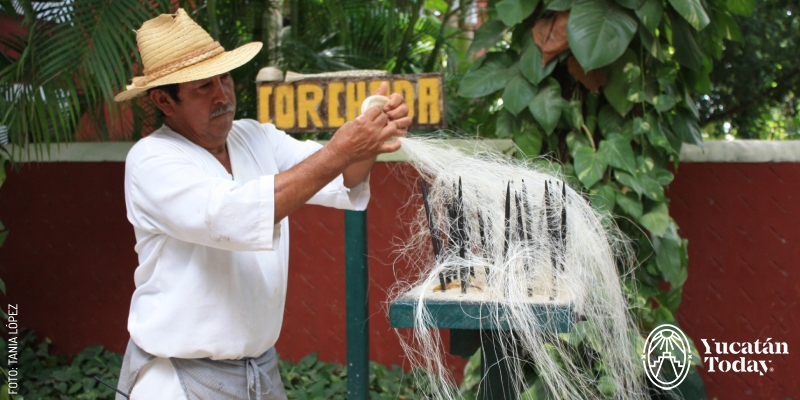 To obtain it, fibers are extracted from the plant and woven into larger ropes; these extremely resistant ropes were globally appreciated at a time in history when there were no synthetic fiber alternatives. Henequén was mainly used to make cords and ropes, and its demand skyrocketed in 1878 when the McCormick wheat reaper machine in the United States incorporated the use of Henequén cords to automatically tie the sheaves. As an example, it is estimated that while in 1811 the value of Henequén exports amounted to around $60 thousand pesos, by 1880, it had risen to more than $1.7 million pesos; by 1915, it had already exceeded $50 million pesos.
To obtain it, fibers are extracted from the plant and woven into larger ropes; these extremely resistant ropes were globally appreciated at a time in history when there were no synthetic fiber alternatives. Henequén was mainly used to make cords and ropes, and its demand skyrocketed in 1878 when the McCormick wheat reaper machine in the United States incorporated the use of Henequén cords to automatically tie the sheaves. As an example, it is estimated that while in 1811 the value of Henequén exports amounted to around $60 thousand pesos, by 1880, it had risen to more than $1.7 million pesos; by 1915, it had already exceeded $50 million pesos.
The Henequén boom left a lasting impact on Yucatán in various ways. What is evident to this day is the opulence in which the hacienda families came to live; the rich mansions of Paseo de Montejo and Avenida Colón, built in resemblance to the grand mansions of Europe (and, no expenses spared, using materials brought from there), bear witness to the abundance provided by the so-called "Green Gold”.
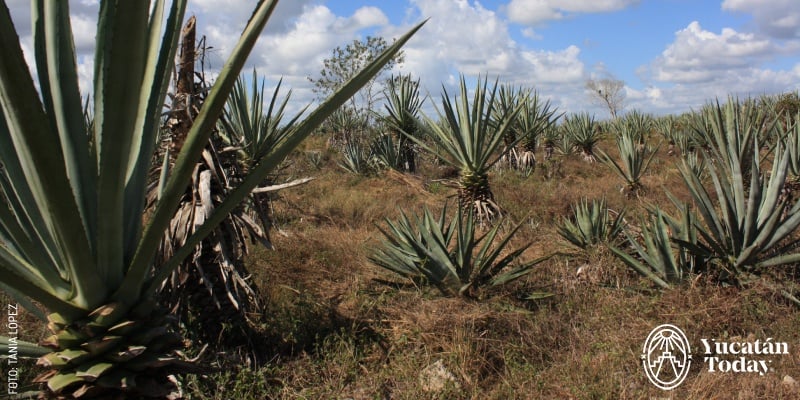 Certainly, Henequén also had its issues. The most notable one was the exploitation of thousands of Maya people who worked to meet the demands of an increasingly growing international market. The Maya were also joined by a significant number of Korean, Chinese, and North American immigrant workers, often brought in through false promises of prosperity. Henequén haciendas were then a kind of equivalent to the cotton plantations north of the Mexican border. Although sisal farm work wasn't technically slavery, the workers were subjected to a debt scheme they could never fully repay, making it impossible for them to leave the hacienda.
Certainly, Henequén also had its issues. The most notable one was the exploitation of thousands of Maya people who worked to meet the demands of an increasingly growing international market. The Maya were also joined by a significant number of Korean, Chinese, and North American immigrant workers, often brought in through false promises of prosperity. Henequén haciendas were then a kind of equivalent to the cotton plantations north of the Mexican border. Although sisal farm work wasn't technically slavery, the workers were subjected to a debt scheme they could never fully repay, making it impossible for them to leave the hacienda.
The Henequén business also brought ruin to several wealthy Yucatecan families due to the long time it took the initial Henequén investment to yield returns. Once planted, it takes from five to eight years for the plants to reach their optimal point for commercialization.
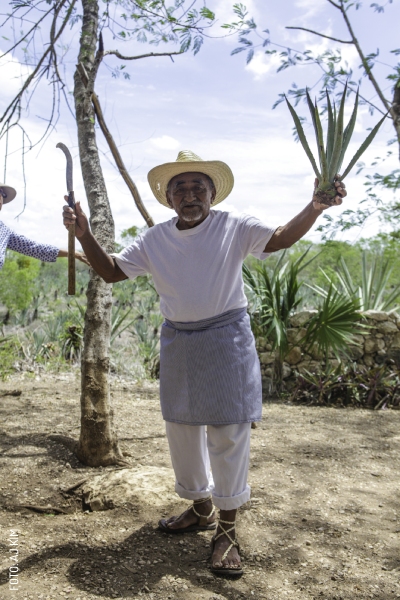 The invention of synthetic fibers effectively ended the era of Yucatecan Green Gold. Nowadays, these fibers are still widely used to make ropes, sacks, ropes, threads, and even crafts such as bags, shoes, rugs, and hammocks. You might have noticed these items in stores in Mérida's Centro (downtown area); if not, take a stroll and ask around—you’re bound to find a good number of sisal-made items.
The invention of synthetic fibers effectively ended the era of Yucatecan Green Gold. Nowadays, these fibers are still widely used to make ropes, sacks, ropes, threads, and even crafts such as bags, shoes, rugs, and hammocks. You might have noticed these items in stores in Mérida's Centro (downtown area); if not, take a stroll and ask around—you’re bound to find a good number of sisal-made items.
The boom of Henequén was pivotal for several other events of great social and cultural significance in Yucatán. The first of these was the Caste War, initiated in 1847, which all but annihilated the sugar industry and other crops in the eastern and southern regions of Yucatán. Let's also recall that since 1821, Yucatán had differences with the government of newly-independent México and sought to become its own country. When it declared its independence for the first time in 1841, the economic importance of green gold was already becoming evident, and it was one of the reasons México refused to accept the separation of the Península.
Another crucial event was the invention of the mechanical scraper for fiber extraction, by José Esteban Solís in 1852; this machine could successfully defiber 6,300 agave leaves in 21 hours after many others had failed in attempts to streamline Henequén production processes.
Overall, we can say that the Henequén industry turned out to be a double-edged sword for the native population of the region. On one hand, for many, the haciendas provided a safe haven away from the armed conflicts that occurred, first in the struggle for Yucatán's independence and later during the Caste War.
However, living conditions there were far from favorable. Moreover, the initial capital investment was too high, well beyond the means of Maya farmers, eliminating the possibility of them being the true owners of this business and relegating them to the role of subordinates, another form of slavery.
The Yucatecan "Green Gold", much like the wealth of many communities worldwide, turned into the prosperity of others, often at the expense of the labor of local residents– a situation not uncommon in today's world. If we genuinely want to appreciate a community's wealth and culture, beyond merely admiring its aesthetic beauty, perhaps we should start by reconsidering what it means for something to be worth "gold", who benefits, and, above all, at what cost.
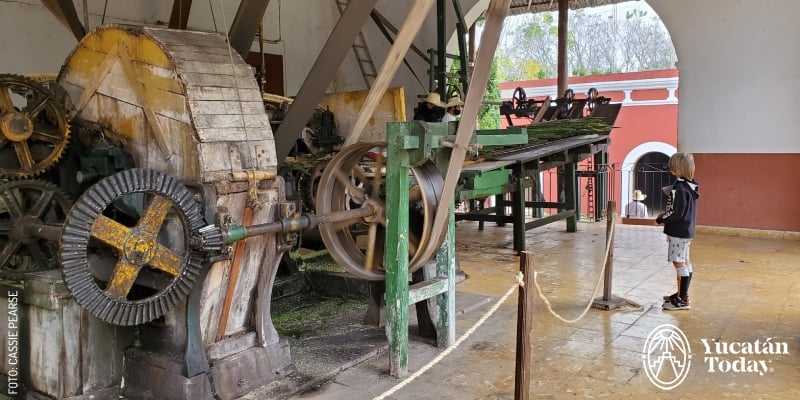
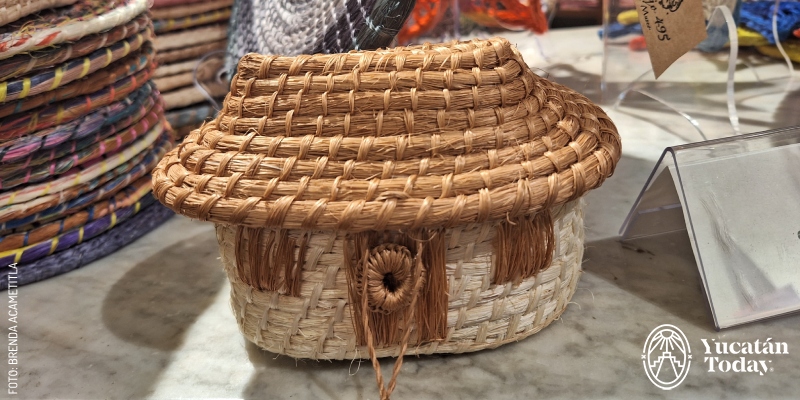
Photography by Brenda Acametitla, Tania López, Cassie Pearse, AJ Kim y Juan Manuel MyT for use in Yucatán Today.

Author: Pamela Fernández
Storyteller and creator 24/7 in my head, sometimes through multidisciplinary platforms with which I share the passion for literature, imagination, and emotions.
Receive the latest articles and much more from the best of Yucatán in your email!
Related articles

Five Haciendas with Activities in Yucatán
Uncover 5 Yucatán haciendas: immerse yourself in historic luxury, henequen culture, Mayan spas, cenotes, tours, and an array of other unique...
Haciendas in Yucatán
Discover the rich history and beauty of Yucatán's haciendas, from their economic significance to their transformation into luxurious hotels and...




